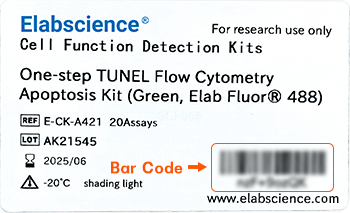Osteocalcin Polyclonal antibody (AN005910L)

For research use only.
| Verified Samples | Verified Samples in WB: Mouse lung, Rat lung |
| Dilution | WB 1:500-1:1000 |
| Isotype | IgG |
| Host | Rabbit |
| Reactivity | Mouse, Rat |
| Applications | WB |
| Clonality | Polyclonal |
| Immunogen | Recombinant Mouse Osteocalcin protein expressed by E.coli |
| Abbre | Osteocalcin |
| Synonyms | Bone Gamma-carboxyglutamate Protein, OT, Osteocalcin, BGP, Bglap, Bone Gla protein, Gamma-carboxyglutamic acid-containing protein |
| Swissprot | |
| Calculated MW | 11 kDa |
| Observed MW |
10 kDa
The actual band is not consistent with the expectation.
Western blotting is a method for detecting a certain protein in a complex sample based on the specific binding of antigen and antibody. Different proteins can be divided into bands based on different mobility rates. The mobility is affected by many factors, which may cause the observed band size to be inconsistent with the expected size. The common factors include: 1. Post-translational modifications: For example, modifications such as glycosylation, phosphorylation, methylation, and acetylation will increase the molecular weight of the protein. 2. Splicing variants: Different expression patterns of various mRNA splicing bodies may produce proteins of different sizes. 3. Post-translational cleavage: Many proteins are first synthesized into precursor proteins and then cleaved to form active forms, such as COL1A1. 4. Relative charge: the composition of amino acids (the proportion of charged amino acids and uncharged amino acids). 5. Formation of multimers: For example, in protein dimer, strong interactions between proteins can cause the bands to be larger. However, the use of reducing conditions can usually avoid the formation of multimers. If a protein in a sample has different modified forms at the same time, multiple bands may be detected on the membrane. |
| Cellular Localization | Secreted |
| Tissue Specificity | Bone. |
| Concentration | 1 mg/mL |
| Buffer | PBS with 0.05% Proclin300, 1% protective protein and 50% glycerol, pH7.4 |
| Purification Method | Antigen Affinity Purification |
| Conjugation | Unconjugated |
| Storage | Store at -20°C Valid for 12 months. Avoid freeze / thaw cycles. |
| Shipping | The product is shipped with ice pack, upon receipt, store it immediately at the temperature recommended. |
| background | Osteocalcin, also known as Bone gamma -Carboxyglutamic Acid Protein, is a secreted protein whose expression is restricted to cells of the osteoblast lineage. It has been frequently used as a marker for osteoblast lineage cells. |
Other Clones
{{antibodyDetailsPage.numTotal}} Results
-
{{item.title}}
Citations ({{item.publications_count}}) Manual MSDS
Cat.No.:{{item.cat}}
{{index}} {{goods_show_value}}
Other Formats
{{formatDetailsPage.numTotal}} Results
Unconjugated
-
{{item.title}}
Citations ({{item.publications_count}}) Manual MSDS
Cat.No.:{{item.cat}}
{{index}} {{goods_show_value}}
-
IF:{{item.impact}}
Journal:{{item.journal}} ({{item.year}})
DOI:{{item.doi}}Reactivity:{{item.species}}
Sample Type:{{item.sample_type}}
-
Q{{(FAQpage.currentPage - 1)*pageSize+index+1}}:{{item.name}}





